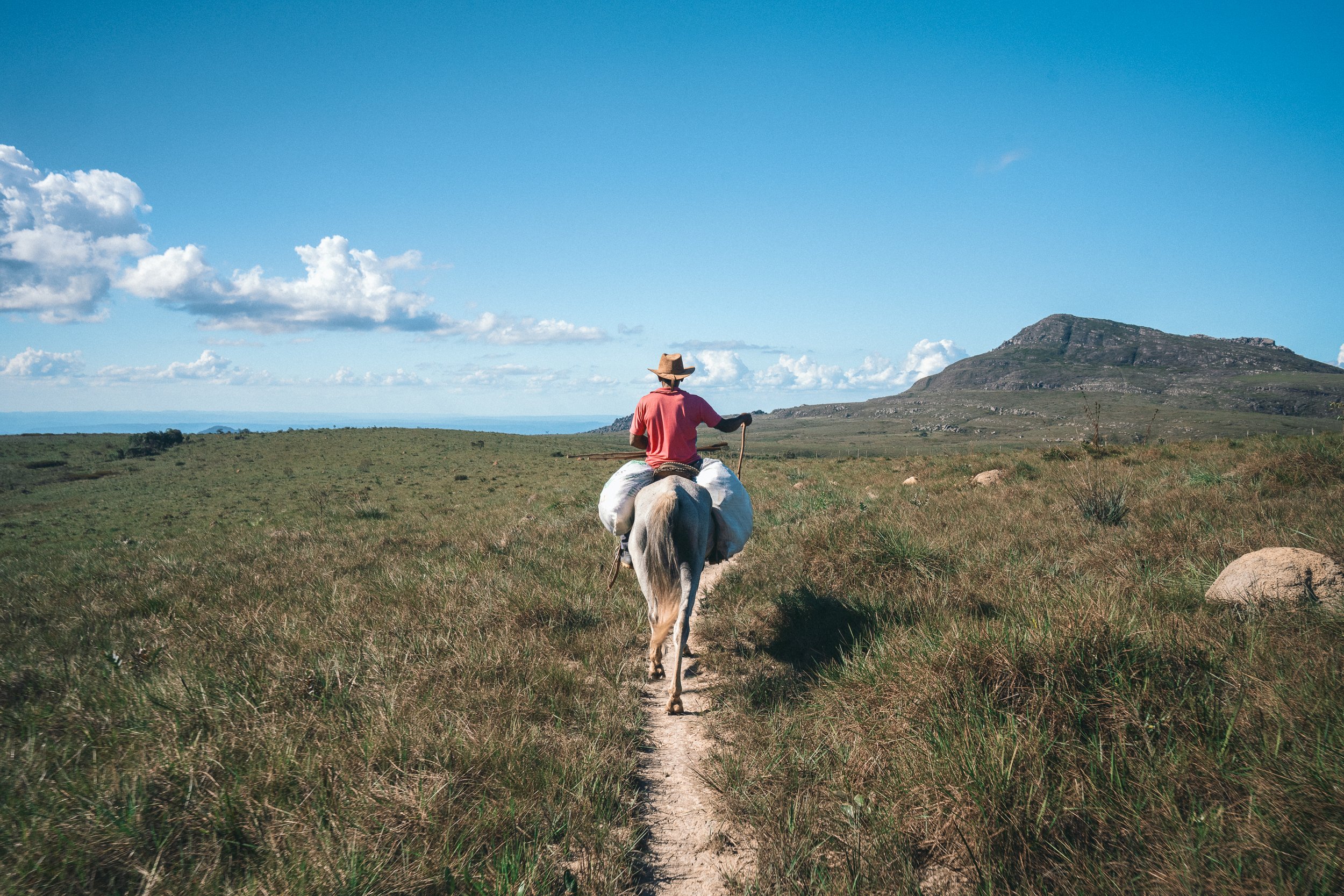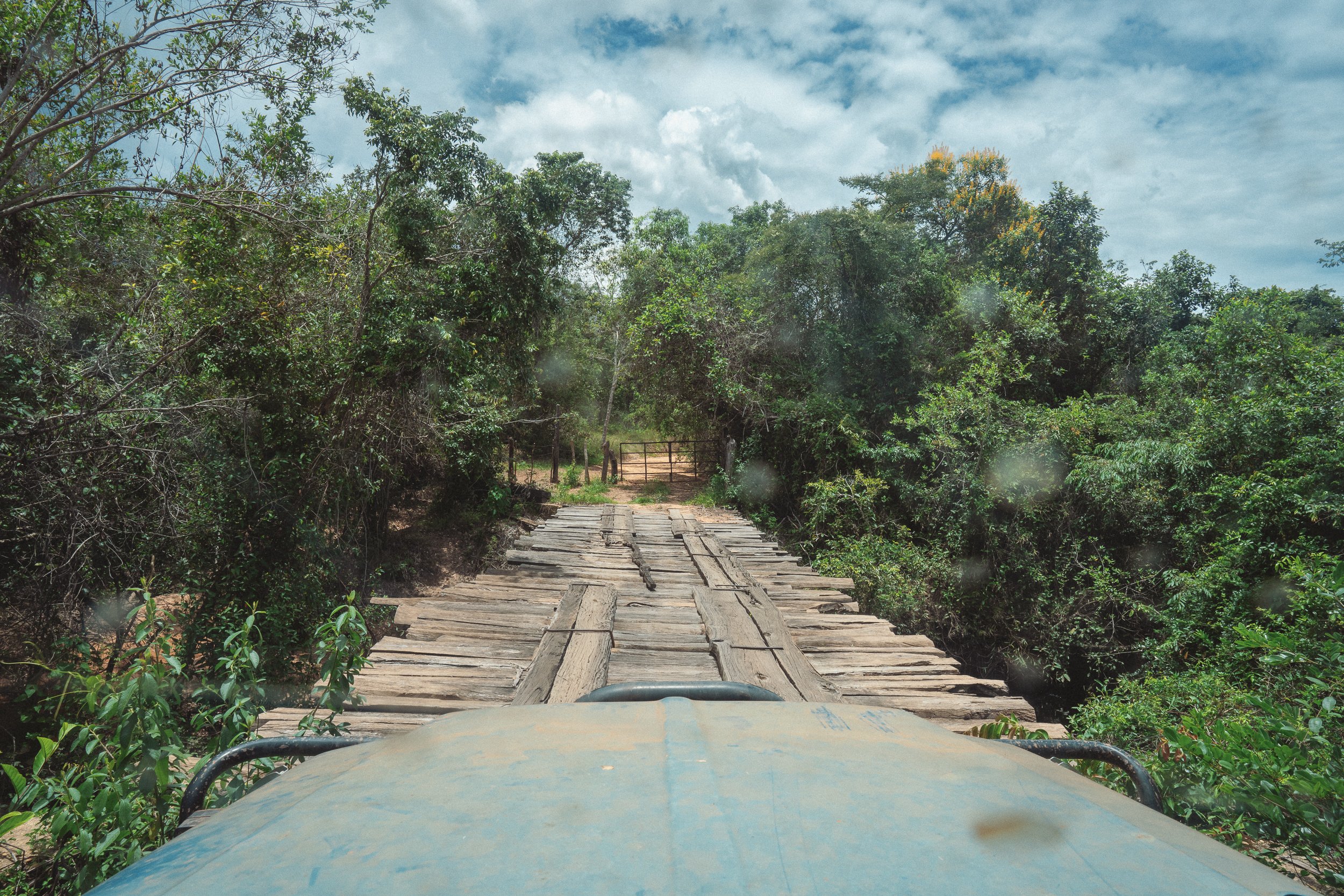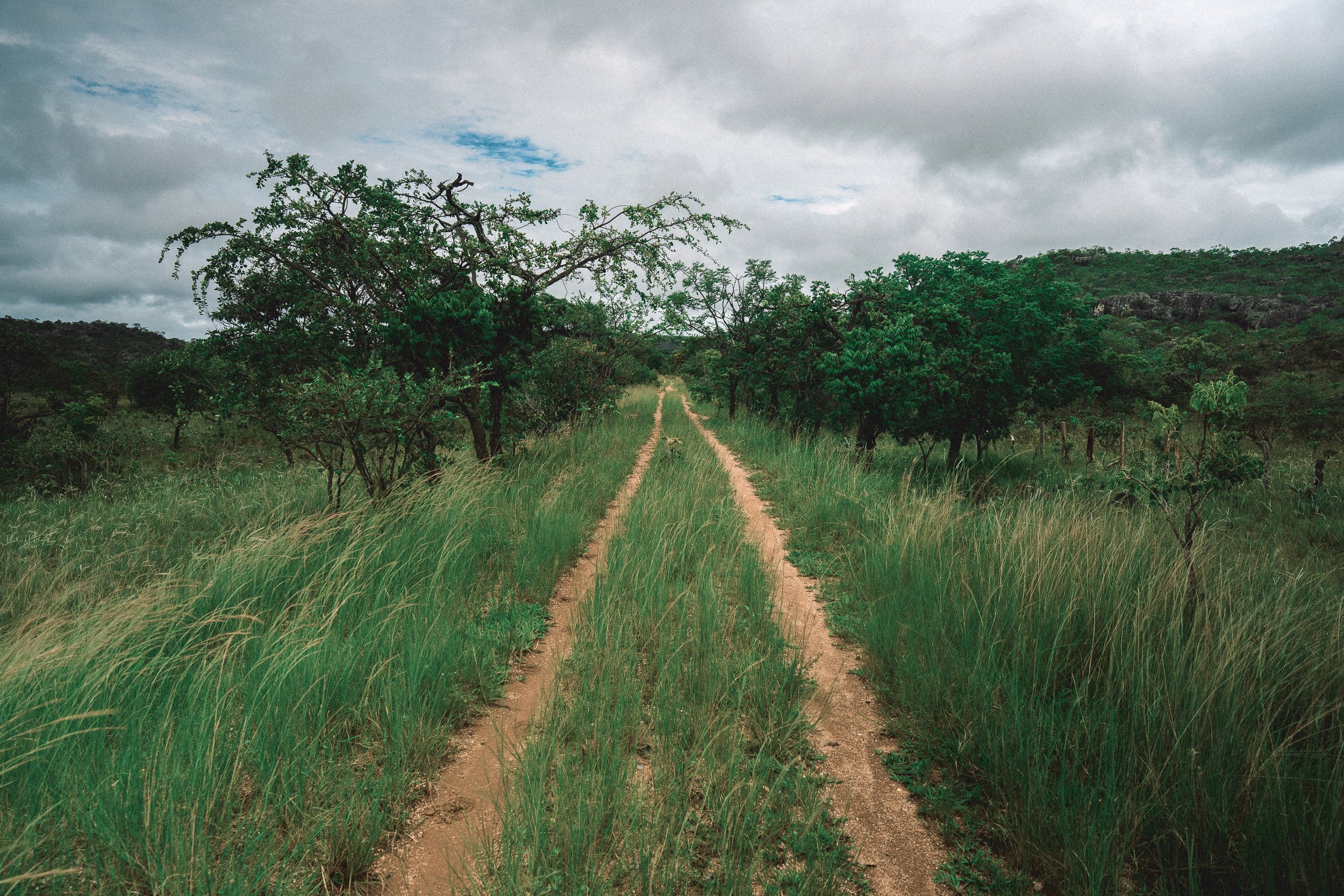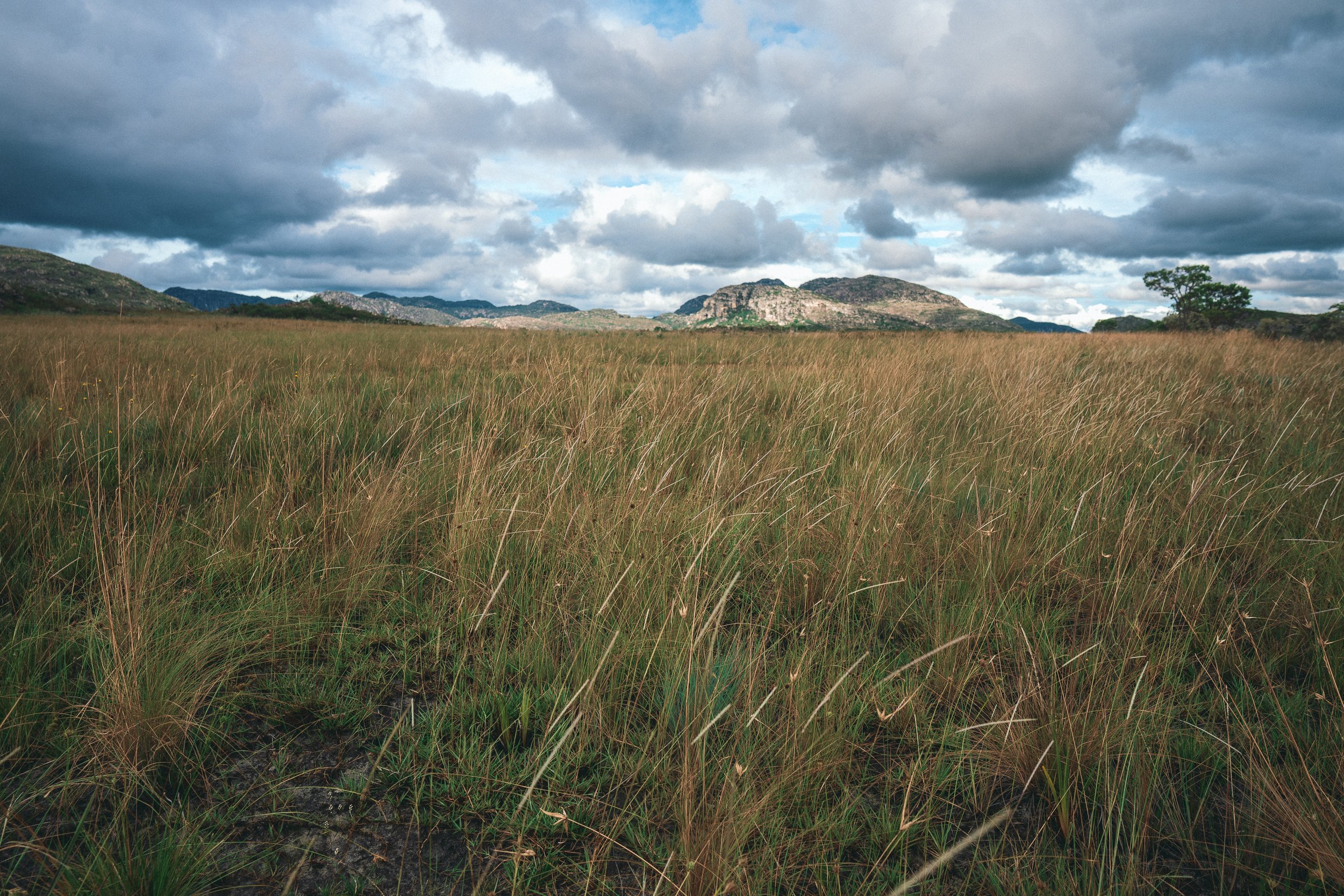
Field Trip no. 8
Field notes & photographs from our recent 15-day crossing of the Serra do Espinhaço, conducted in preparation for a pair of upcoming Expeditions with international journalists.
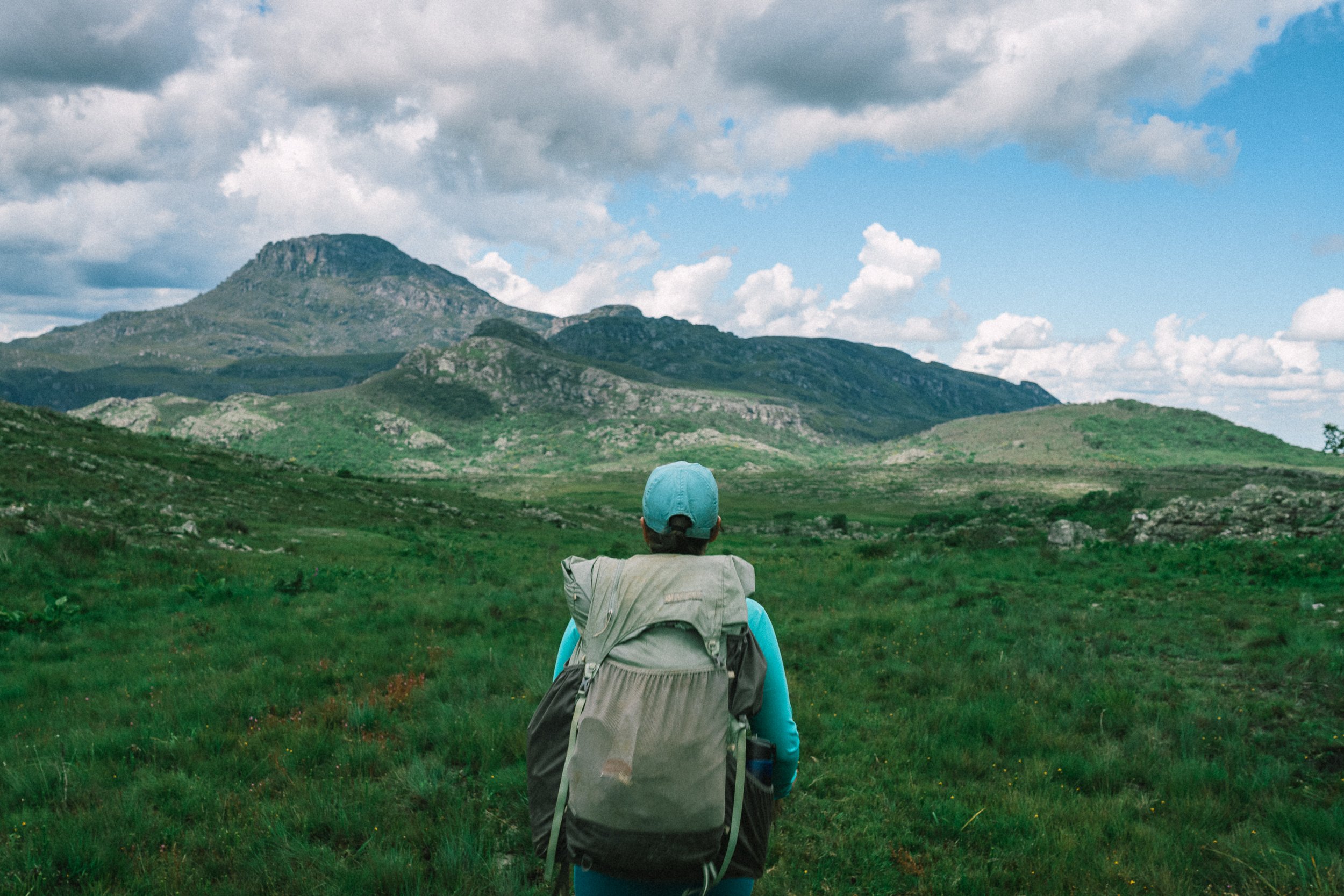
View of Itambé. Near Capivarí (day 2)
1
Diamantina + São Gonçalo do rio das pedras
Our most recent multi-week field trip across Brazil’s incomparable Serra do Espinhaço wasn’t exactly spur-of-the-moment… but it wasn’t not spur of the moment either. Elisa & I had initially planned on taking the trip in mid-December, but the summer storms—running months behind of schedule, thanks to El Niño—finally came on, forcing us to abandon our plans (and go to the beach in nearby Espirito Santo, which turned out to be great).
As mid-January rolled around, we unexpectedly found ourselves with a second, multi-week window: the forecast was predicting a 4-day break in the storms—just enough time for us to safely cross the peaks & barren high plateaus southeast of Diamantina at the beginning of the trip. Making the opportunity even more precious was the fact that Luca (our older son, who has been living with us in Diamantina during our research) was still on summer break, traveling with extended family in the U.S..
Elisa began making all of the arrangements necessary for our immediate departure, messaging drivers, innkeepers, Park personnel, and the dozens of locals who we hoped to walk, dine, stay with, and/or meet during the trip. I packed our bags and made 3 days worth of sandwiches for the trail (which we tragically forgot in the jeep at the trailhead on Day 2, but I digress.).
The window was open, but timing was of the essence. Lightning is the most feared natural phenomenon in this part of the world, and January is her month; for our trip to be productive (and safe), we would need the weather to cooperate.
Plans & ill-fated Sandwiches. São Gonçalo do rio das pedras
Blue SkIES! São Gonçalo do rio das pedras
Drone stop. Near Fazenda Paraíso
Secret Entrance. São Gonçalo do Rio das PEdras
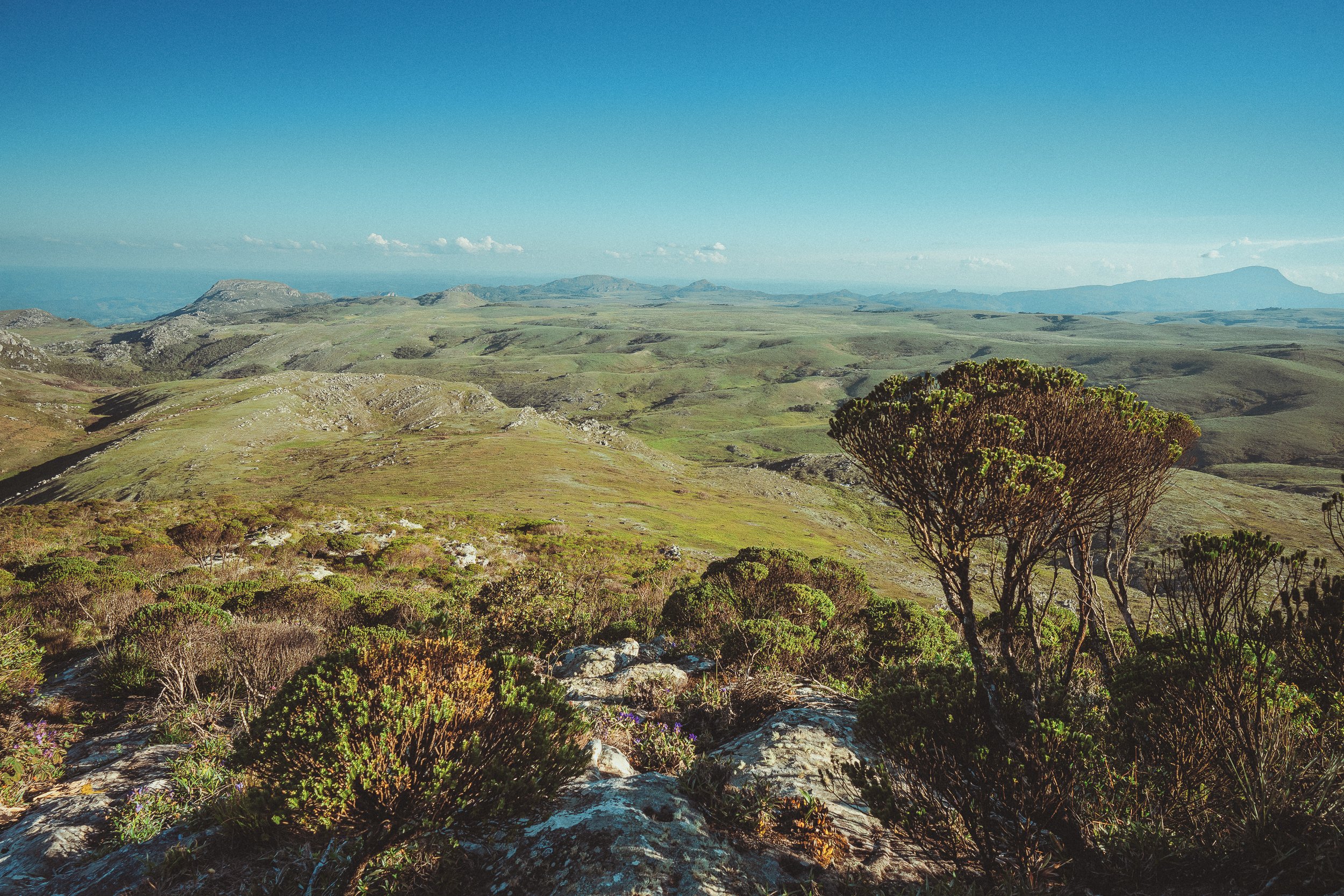
View from pico dois Irmãos. Chapada do couto
I. 2, 3, 4
Capivarí + Santo Antônio do Itambé + Bica D’Agua + Mata dos Crioulos + Chapada do Couto + Rio Preto State Park
The first leg of the trip was… spectacular. With the exception of a lone (windy!) storm that caught us on our way down the eastern escarpment of the range during sunset on Day 2, the weather forecast held true, and Elisa & I were able to enjoy the “high rewards” portion of the calculus inherent to outdoor pursuits in the Espinhaço this time of year: pure blue skies, tantalizingly lush vegetation, raging waterfalls, and empty trails (the norm throughout the year, but especially so in the rainy season).
I took less photos than usual during this leg of the trip, as we make the trek regularly (variations of it appear throughout our trips) and have documented it well. Our objectives this time around were two-fold: first, to test certain logistics unique to the upcoming journalist trips (such as overnighting in São Gonçalo on Day 1, then overlanding to Capivari on Day 2 to begin our trek); and second, to observe & analyze the rhythm, pace, and vibe of the proposed itinerary in real time.
It was incredibly instructive from the get-go, as we were able to easily identify what we liked (our new ending to Day 3) & didn’t like (our experimental start to Day 2, including a misplaced hike in São Gonçalo to start the day and an ill-advised feast in Capivari just one hour prior to starting our trek) about the itinerary we’d put together.
We did have a chance to do at least one new epic thing during this leg of the trip: a brisk, golden hour summit of Pico Dois Irmãos at the end of Day 3, less than 24 hours removed from our descent of Pico do Itambé. The view from atop was so gorgeous, and the pace of the Day so impeccable, that this will probably be our new Plan A for all of trips that make it this far east.
Cachoeira da Fumaça de Cima. Itambé State Park
Peak-Bound. Chapada do Couto
Victory High! Pico dois irmãos
Golden Hour. Pico dois Irmãos
Lavoisiera Imbricata. Itambé State Park
Near The REsearchers’ house. Chapada do Couto
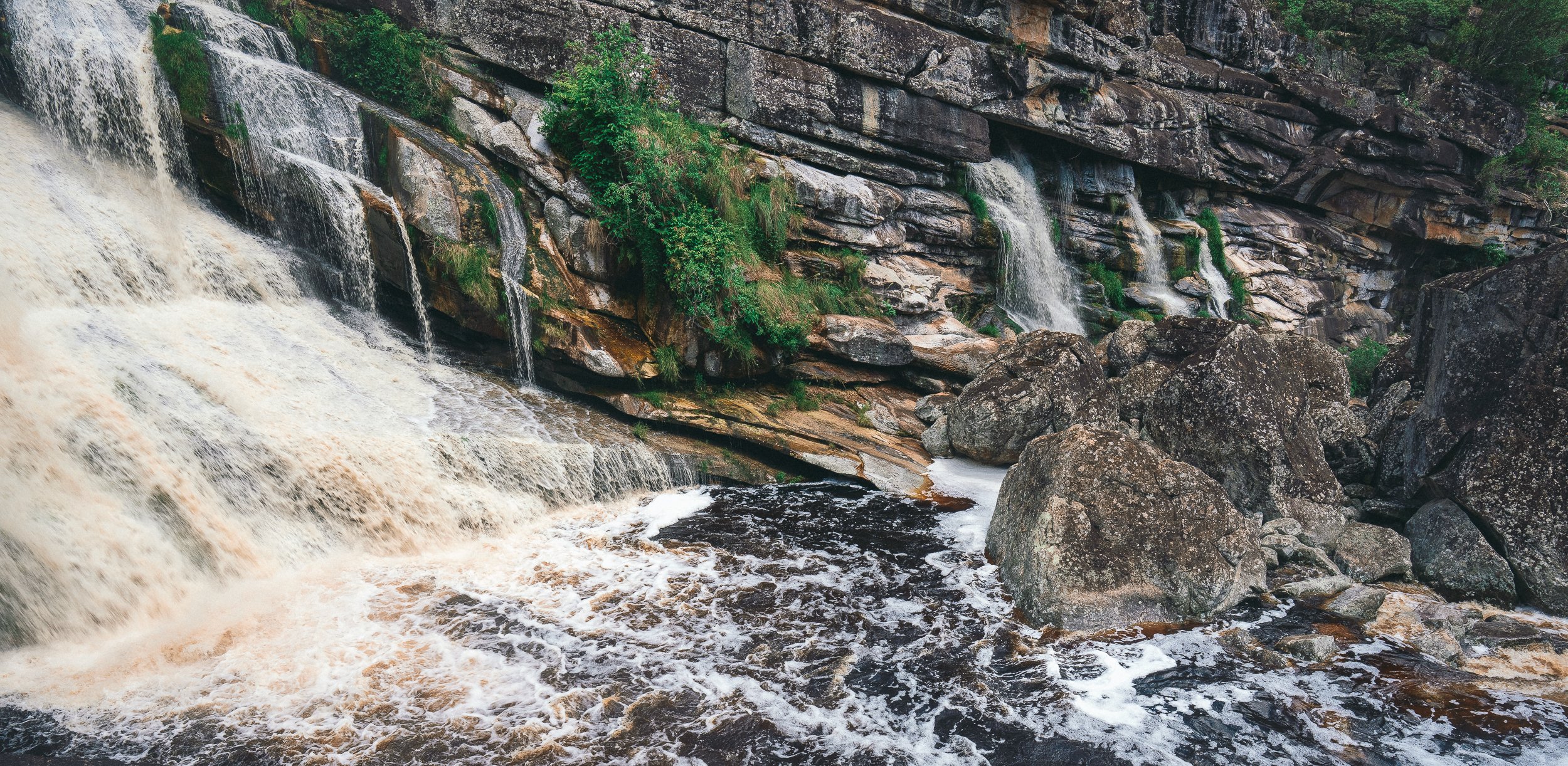
Fundão. Inhacicão
II. 5, 6, 7
Abóboras + Couto Magalhaes + Braúnas + Inhacicão
Day 5 marked the beginning of the second leg of our Expedition—six surprisingly action-packed days that collectively represented the most eventful & productive stretch of the trip. This leg was also when the trip began to feel more like the spur-of-the-moment outing that it was, rather than a well-oiled GOGO Expedition.
Unofficially, it began just after sundown on Day 4, when Gaúcha (our 1989 Toyota Bandeirante) dropped an unidentified piece of her drivetrain on the highway on our way to Abóboras (we heard the distinct clang of metal hitting the asphalt, but were unable to locate the piece in the dark). The next morning, as we were debating the urgency of the situation, we also noticed, for the first time, a pronounced metallic screech coming from the passenger side wheel well. Urgency level now confirmed, we sought a diagnosis from the lone diesel mechanic in Couto Magalhães, who delivered it quickly: a missing leaf spring (the “clang” in the night), and an obliterated disc brake pad (the “screech” in the morning).
We decided to leave Gaúcha in the shop for the night and take an acquaintance of ours, Deco, a local innkeep, up on his longstanding offer to get to know his nearby pousada. Elisa used the rest of the day to notify our long list of contacts that we were now running a day behind schedule, while I caught up on social media posting (I had been posting, begrudgingly and for the first time ever, Stories on Instagram & Facebook throughout the trip).
It turned out to be the first of many serendipitous “audibles” that we called during the remainder of the trip. Not only did we ultimately decide to replace our original accommodation (the abandoned elementary school in Abóboras) with Deco’s charming home in Couto for the upcoming journalist trip, we also had the pleasure of meeting his son-in-law, André, an incredibly insightful tourism consultant who we’ve since begun working with to refine GOGO’s field processes.
As for our first visit ever to tiny, sweltering Braúnas (on Days 6 & 7): it was as productive, bizarre, and exhilarating as we could have possibly hoped. From successfully charting & documenting the little-traveled Inhacica Grande River with Gomercindo & Devaldo, to hanging out with miners involved in the ongoing (illegal) gold rush in the region; discovering my new favorite watering hole on earth (a buteco so small we had to bring our own shot glasses!), to pitching a tent between infants & in-laws in Gomercindo’s crowded bedroom, everything except for the food (we hardly ate a thing) was riveting & memorable during our 30 or so hours in the community. It took us 3 years to discover this little gem of a quilombo, but we won’t wait nearly as long before our next visit.
Good Times with deco. Couto Magalhães
Tractor Time! Inhacica Grande
Mestre Gomercindo. Braúnas
Knife through butter. Inhai
PutTing in. Inhacicão
Our Captains. Inhacicão
Fundão. Inhacicão
Best Buteco Ever. Braúnas
Cascilho during the rainy season. Inhacicão
Unexpected Company. Inhacicão

Streets of Inhaí. Inhaí
II. 8, 9, 10
Inhai + Sempre Vivas National Park
Logistically & (especially) spiritually, our time in the colonial-era mining town of Inhaí was a direct continuation of our stays in Braúnas & Couto. Seemingly each day, an unexpected & urgent event led us to make a last-second decision, which in turn paved the way for a new relationship or key finding.
In fact, we wouldn’t have stayed even a single night in Inhaí were it not for our host in Taquaral (on Day 8), Sr. Levi, having suddenly fallen ill & having to be transported to Diamantina (thankfully, his condition has since improved). Then, on Day 9, a scary, rapidly-encroaching thunderstorm caused us to abandon our reconnaissance of the remote Fazenda Buriti, forcing us back to our pousada and leading to one of the most productive work days of the trip.
No turn of events in Inhaí were more important, memorable, or inspirational for Elisa & I, though, than our chance meeting of Sr. Barbosa & Dona Lúcia, an incredibly kind & welcoming couple with whom we hope to spend much time in the near future, and to work with on our trips.
On Day 10, the final day of the second leg of our Expedition, we were able to complete our reconnaissance of the little-visited Fazenda Buriti, leaving just early enough in the morning to avoid the afternoon lightning display.
We had never even planned on being in Inhaí—for all of its beauty & enigma, the community had failed to win us over during previous visits—yet no place on this trip left us more fulfilled, grateful, or inspired. Beginning with our vehicle problems on Day 5, seemingly nothing had gone according to plan, but everything was wonderful.
Backdoor to The Park. Near Inhaí
Work. Inhaí
Rendezvous point. Fazenda Buriti
New Friends. Inhaí
Digs. Inhaí
Work #2. Inhaí
Before the Storm. Fazenda Buriti
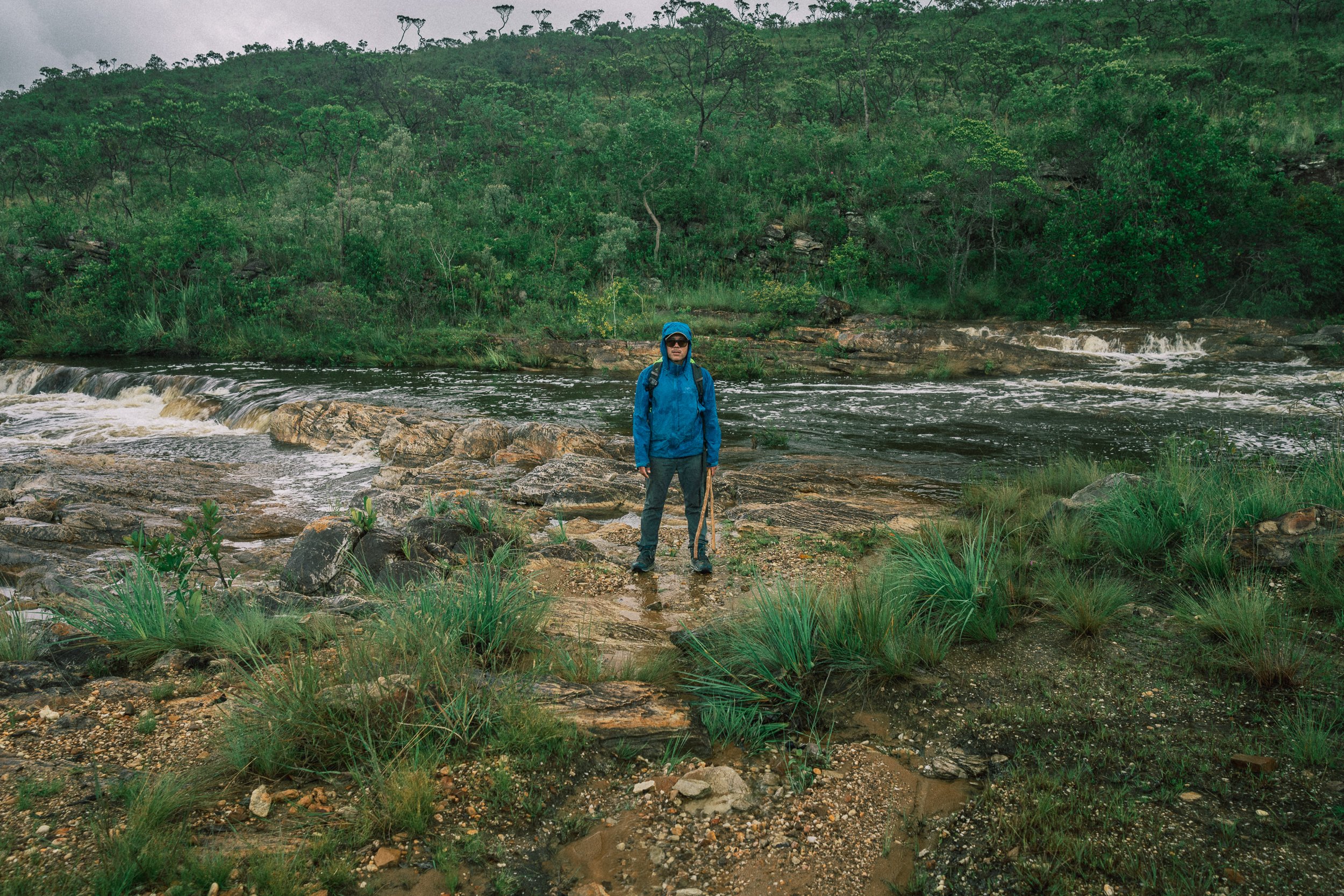
All Geared Up. Fazenda Raíz
III. 11, 12, 13
Conselheiro + mendes + Galheiros + Guinda
Similar to the first (southeastern) leg of the Expedition, Elisa & I know the communities, trails, waterfalls, and backroads southwest of Diamantina quite well. In fact, we arguably know Conselheiro Mata (pop. 200; the largest community in this part of the Espinhaço) better than Diamantina itself. So we weren’t missing photos or videos of the region. Rather, we had come to experience something that I had done only once before, and which Elisa had never done—to ride our mountain bikes eastward, upward along the old railway from Conselheiro to Mendes.
Except that, just 2 weeks before, we had biked the same stretch westward, downward (something that I do fairly often, since the trail passes by our front door), and Elisa was no longer enamored by the idea of doing the uphill version. Her reservations about doing the trail by bike, mixed with my reservations about the day’s relative lack of natural & cultural drama, mixed with rain in the forecast…
We decided to do the trail, anyway, but did so on foot, and while the landscape was as pretty & meditative as it always is, and the waterfalls were raging, the gray clouds & cold rain took some of the shine off of the day, and the constant threat of lightning (and lack of places to take shelter) made for a bit of a grim experience. After reflecting a bit at the end of the trip, we made the decision to remove the old railway from the upcoming journalist trips, but to keep Conselheiro Mata on it. There are no easy decisions when it comes to cutting itineraries down to size, but it has to be done. In this case, some of the work was done for us: after our trip had ended, we received word that the itinerary would need to be shortened to 14 days (from 16).
From Mendes, Xaxau drove us in Gaúcha to Galheiros (pop. 25), a scenic, bite-sized flower-picker hamlet that we’ve become increasingly familiar with over the course of the past year due to a handful of good friendships. Our longest-standing friendship is with local elementary teacher Nica & her cowboy husband, Pê, and we had come to spend the evening with them and to chart the historic, little-traversed trail from Galheiros to nearby Guinda with Pê the next day.
The day was as wet (or wetter) & gray as the day before, and the trail—now severely waterlogged—-had all but disappeared for large stretches, making it one of the messiest outings of the trip. Still, by all accounts, it was an incredibly productive exercise: not only were we able to chart & document a historically important footpath, we were also able to get a close look at Pê as a potential local guide for our trips. (We also ate what Elisa & I were quick to pronounce the most delicious cake we’d ever eaten, 4 hours into the trek at the home of a family friend of Pê’s. Unfortunately, for reasons I cannot fathom, I did not take a single picture of it.) In the end, this Day, too, became a casualty of the new, shortened itinerary.
Waiting for the wind. Linha Verde
Pê. Galheiros
Pinga-Fogo’s house. Mendes
Near the Blocos. Quarteis
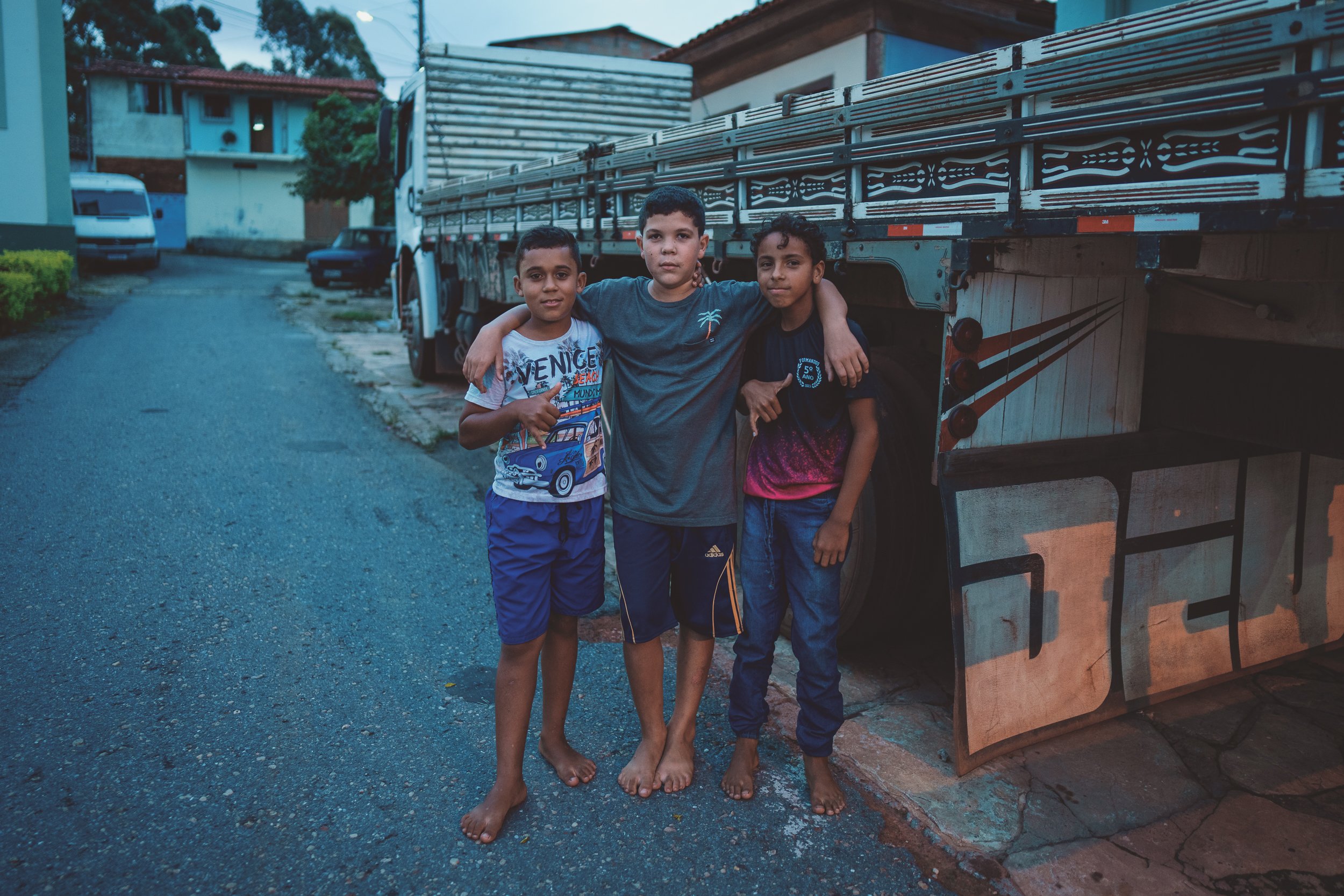
Moçada. Guinda
III. 14, 15, 16
Sopa + Diamantina + Guinda
The sprawling historic mining district of Guinda (pop. 533) is located just 10 km from the tiny house that Elisa & Luca & I have called home during the past 18 months. For a variety of reasons, however, we had never spent a single night there prior to this trip.
Guinda wasn’t on our itinerary for the upcoming journalist Expeditions, either—it was already hard enough to whittle our trips down to 14 days, given all of the places that we know well—but it had long been a curiosity for us, and remains a key potential stopover for any bespoke trek to the west and/or southwest of Diamantina.
Arriving on foot in the gritty, gray streets of Guinda with Pê was beyond memorable. As a Texan, I would describe his incredible popularity with locals in the region to that of a legendary small town highschool quarterback. Within minutes, Elisa & I found ourselves with new friends, new bar options, and new potential guides—at least one of whom we’ll be following up with at some point in the not so distant future.
As for Guinda itself, the district was not so different from my previous, drive-by impression of it. The “town” is sleepy, but urban, and decidedly unappealing aesthetically—more so, I would say, than any of Diamantina’s other districts. Its main praça is small & non-descript, its asphalt alleys punctured & pot-holed, and its decadent colonial-era homes outnumbered greatly by brutalist dwellings in various states of incompletion. Such realities (as well as a few others we noted during our short stay, including confetti-like litter and, unfortunately, a number of dead canines) are ubiquitous to urban settings across Brazil.
Thankfully, as is also frequently the case in urban Brazil, the district shines brightly behind the imposing gray walls of its buildings. The pousada where we spent the evening, for instance, was one of the prettiest & fanciest we have ever stayed at in the region, and the restaurant where we dined is one of our absolute favorites in the Espinhaço (we have been on multiple occasions). Guinda’s main natural attraction, the quarry-turned swimming hole Lagoa Azul, was also far prettier than I had imagined it, and void of any signs of visitation, including litter.
We left town shortly after breakfast (an embarrassingly lavish buffet, just for Elisa & I), and headed along the asphalt in the direction of São João da Chapada. Our plan for the day (Day 13) was to walk to Biribiri, a historic vila that we have approached from a dozen angles over the years, but never from Guinda.
We made great time to the halfway point before our progress was suddenly halted by a fierce storm. As we watched the sky darken and lightning begin to rain down on Biribiri and, beyond, Diamantina, we took cover in a low-lying forest, removed our packs & photo equipment, and assumed “lightning pose”—ducked down, heels pressed firmly into the ground, hands over our ears. Half an hour of nervousness later, we decided to call it a day, and sent our coordinates to Xaxau (luckily, being so close to Diamantina at this point, Elisa had 3G).
The forecast showed intense storms in the region for the next week, and all that remained for us were three long (25+ km) trekking days along the high barren plateaus northwest of Diamantina. We resolved to make those days up later, and spent the next couple of afternoons & evenings visiting specific sites in Gaúcha.
All in all, it had been an incredibly eventful trip, and a refreshingly productive one. We came away inspired, resolved, and rejuvenated. The upcoming journalist Expeditions will be better for having done it. We can’t wait for the next one.
Blue Lagoon. Guinda







